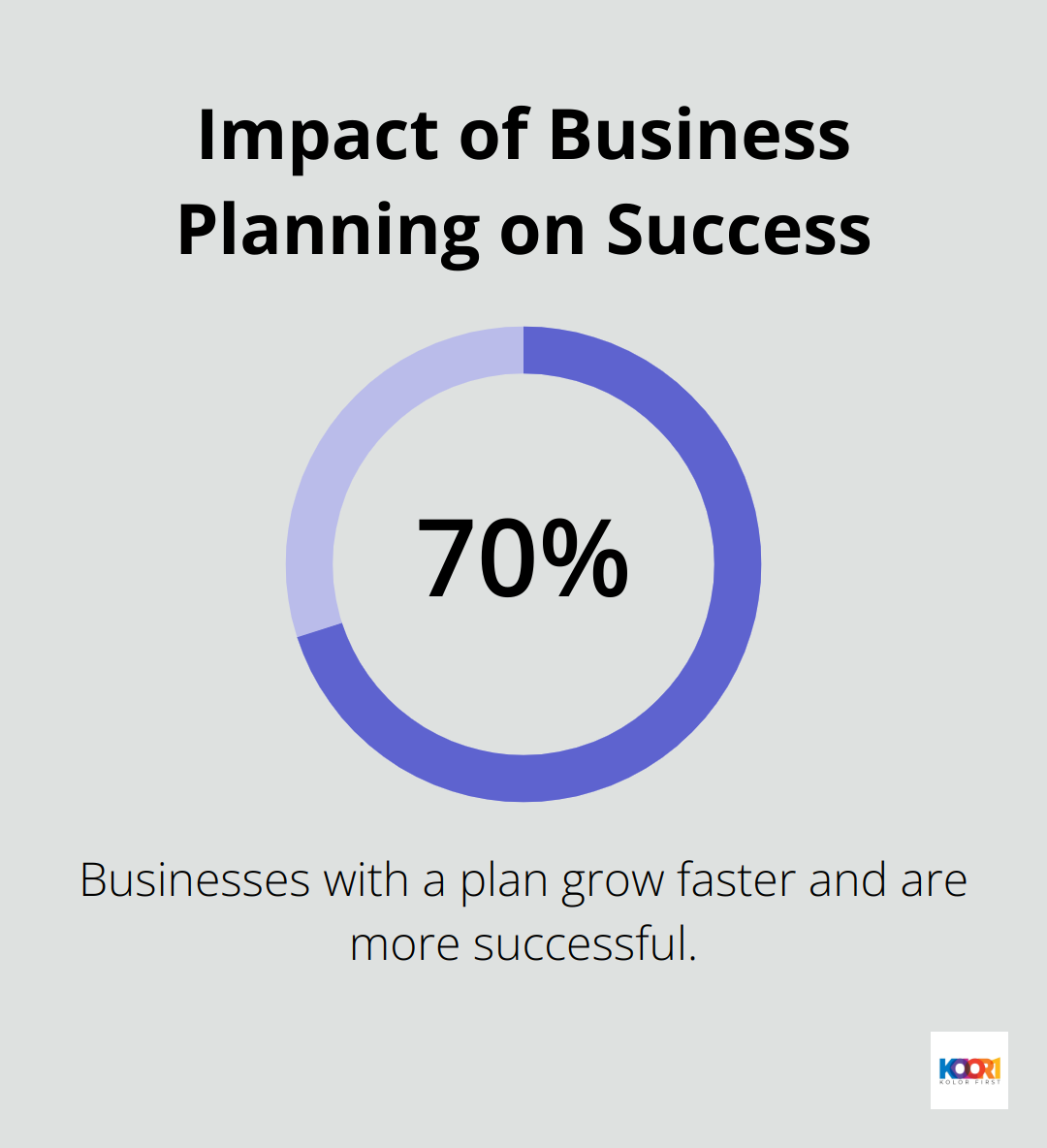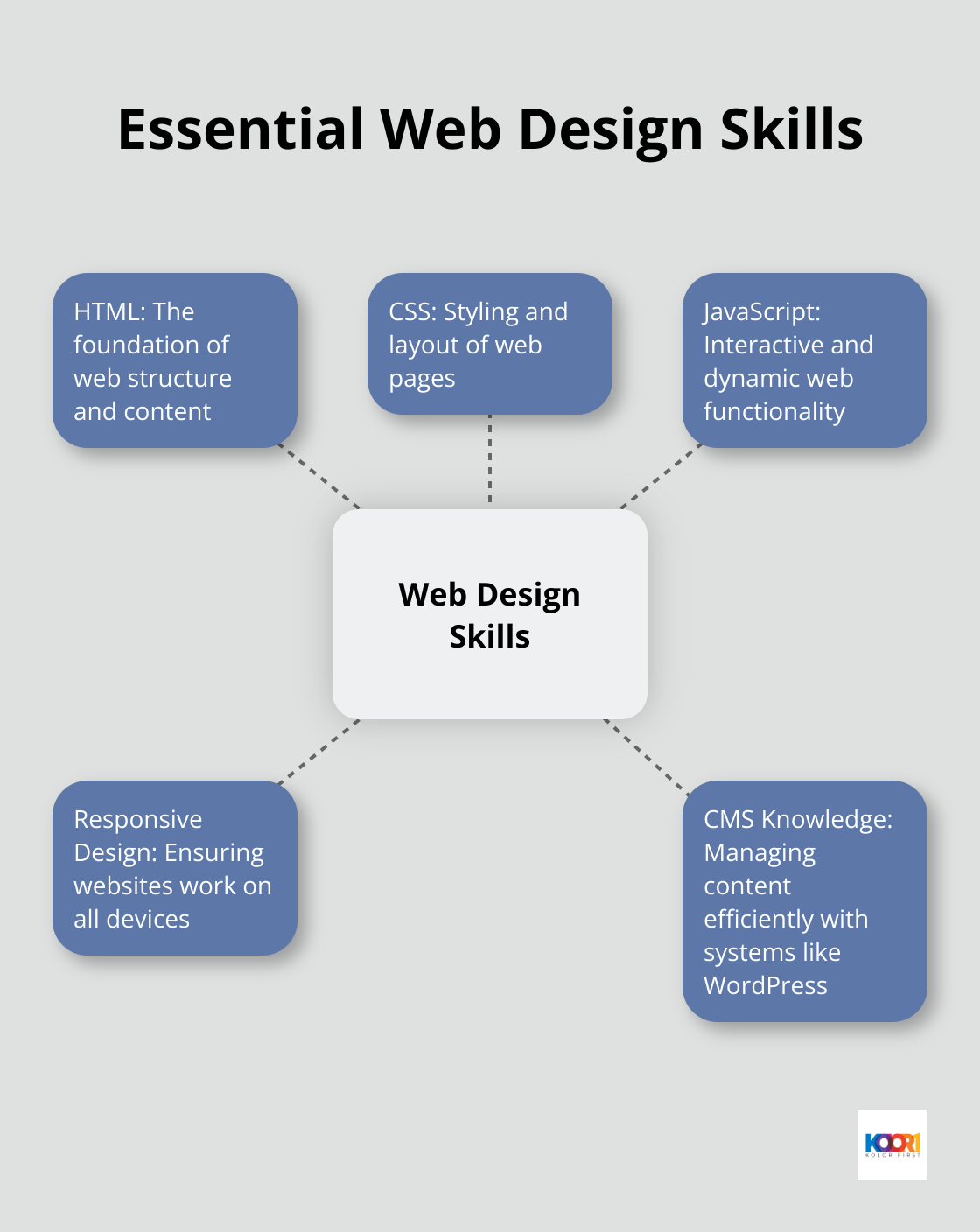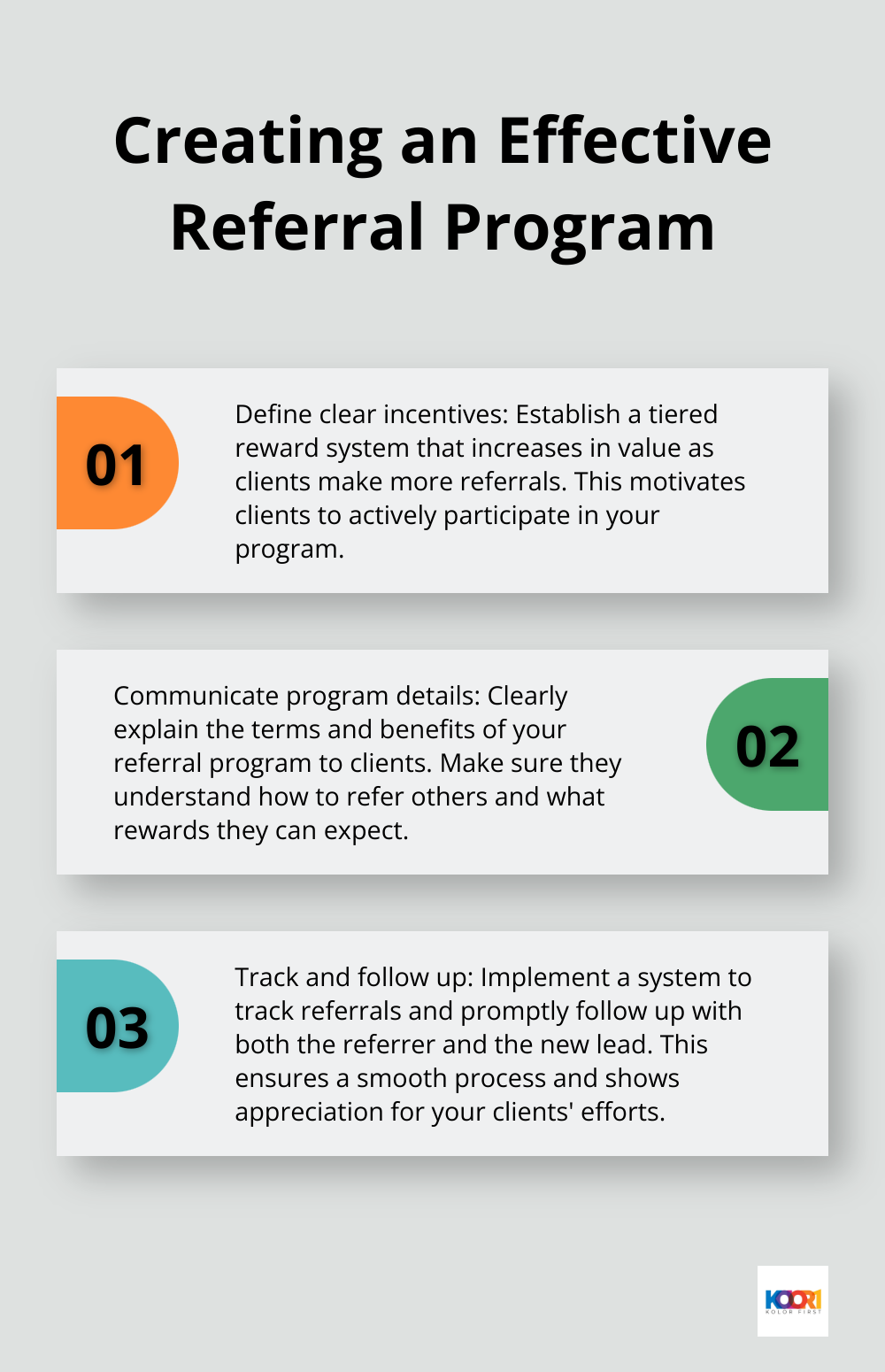Starting a web design business can be an exciting and rewarding venture. At Kolorfirst LLC, we’ve seen firsthand how the digital landscape continues to evolve, creating endless opportunities for skilled designers.
This guide will walk you through the essential steps to launch and grow your own successful web design business. From planning and skill-building to marketing and client acquisition, we’ll cover everything you need to know to turn your passion into a thriving enterprise.
How to Plan Your Web Design Business
Identify Your Niche
The web design market is vast and competitive. To stand out, you need to specialize. Do you excel at creating e-commerce sites? Or perhaps you craft sleek portfolios for creatives? Focus on a specific niche to become an expert in that area, making it easier to attract and retain clients.
For example, if you choose to specialize in e-commerce, you’ll need to master platforms like Shopify or WooCommerce. This expertise will allow you to charge premium rates and deliver superior results compared to generalist designers.
Create a Solid Business Plan
A well-crafted business plan serves as your roadmap to success. It should outline your services, target market, competitive analysis, and financial projections. A study found that businesses with a plan grew faster and were more successful than those without one.

Your financial projections should include startup costs, expected revenue, and projected expenses. Be realistic – the average web designer salary can vary significantly based on your niche, location, and experience.
Choose the Right Business Structure
The structure of your business impacts your taxes, liability, and ability to grow. For most web designers starting out, a Limited Liability Company (LLC) offers the best balance of protection and flexibility. It shields your personal assets from business liabilities while providing tax benefits.
Registering your company is a crucial step. Each state has different requirements, so check with your local Small Business Administration office for guidance. Don’t forget to trademark your business name to protect your brand identity as you grow.
Set Up Your Workspace
Your workspace significantly impacts your productivity and creativity. Whether you work from home or rent an office, invest in a comfortable chair, a reliable computer, and necessary software. Many designers prefer Apple computers for their reliability and design-focused software ecosystem.
Factor in ongoing costs like internet, software subscriptions, and equipment upgrades when planning your finances. These expenses can add up quickly (often more than you might expect), so it’s essential to account for them from the start.
Develop a Pricing Strategy
Pricing your services correctly is vital for the success of your web design business. Research your competitors’ rates and consider your expertise, project complexity, and target market. Try to strike a balance between competitive pricing and fair compensation for your skills.
Consider offering tiered pricing packages to cater to different client budgets. For instance, you might have a basic package for simple websites, a mid-tier option for more complex projects, and a premium package for full-scale e-commerce solutions.
As you plan your web design business, the next crucial step is to build your skills and create a compelling portfolio. This will showcase your expertise and attract potential clients.
How to Build Your Web Design Skills and Portfolio
In the web design industry, your skills and portfolio are your most valuable assets. They set you apart from the competition and attract high-paying clients. Here’s how you can build both effectively:
Master the Essential Tools
To succeed in web design, you need to become proficient in a range of tools and technologies. Start with the basics: HTML, CSS, and JavaScript. These form the foundation of web development and are non-negotiable skills for any serious web designer.
Next, familiarize yourself with popular content management systems (CMS) like WordPress. Learn to use design software such as Adobe Creative Suite or Sketch. These tools are industry standards and many clients will expect you to know them.
Don’t overlook responsive design. With mobile devices accounting for a significant portion of global website traffic, you must create websites that look great on all screen sizes.

Stay Updated with Industry Trends
The web design field evolves rapidly. What’s cutting-edge today might become outdated tomorrow. To stay competitive, dedicate time each week to learn about new technologies and design trends.
Follow influential web design blogs, attend webinars, and participate in online courses. Platforms like Udemy or Coursera offer affordable courses on the latest web design techniques. The investment in your education will pay off in the quality of your work and the rates you can charge.
Create a Diverse Portfolio
Your portfolio is your shop window. Potential clients will judge you based on it, so make it count. Try to include a variety of projects that showcase different skills and styles. If you’re just starting out and lack client work, create speculative projects or offer your services to local non-profits to build your portfolio.
When presenting your work, don’t just show the final product. Explain your design process, the challenges you faced, and how you solved them. This gives potential clients insight into your problem-solving skills and work ethic.
Specialize in a Niche
While it’s important to have a diverse portfolio, consider specializing in a particular niche. This could be e-commerce sites, healthcare websites, or portfolio sites for creatives. Specialization allows you to become an expert in your field, command higher rates, and attract clients who value your specific expertise.
For example, if you specialize in e-commerce, you might become an expert in platforms like Shopify or WooCommerce. This expertise allows you to offer more value to clients in this niche (justifying higher rates).
Develop Soft Skills
Technical skills are important, but don’t underestimate the importance of soft skills. Communication, project management, and client relations are all vital to running a successful web design business. Practice explaining technical concepts in simple terms, learn to manage client expectations, and develop a system for keeping projects on track.
Clients aren’t just buying your technical skills; they’re buying the experience of working with you. The better you are at managing the client relationship, the more likely you are to get repeat business and referrals.
Now that you’ve built your skills and portfolio, it’s time to focus on marketing your web design business and acquiring clients. The next section will guide you through effective strategies to promote your services and attract your ideal customers.
How to Market Your Web Design Business and Acquire Clients
Build a Strong Online Presence
Understand your audience and positioning. Optimize your website and invest in local SEO. Build relationships via social media. These steps are crucial for establishing a strong online presence for your web design business.
Create content that showcases your expertise. Write blog posts about web design trends, case studies of successful projects, and tutorials on using popular design tools. This approach not only helps with SEO but also positions you as an industry expert.
Use social media platforms where your potential clients spend time. For B2B clients, LinkedIn often proves the most effective platform. Share your work, participate in industry discussions, and post valuable content regularly.
Network Strategically
While online marketing holds importance, don’t underestimate the power of face-to-face networking. Attend industry events, join local business groups, and take part in web design meetups. These connections can lead to referrals and partnerships.
Consider partnering with complementary businesses. Team up with a copywriter or a digital marketing agency. You can refer clients to each other, expanding your reach without direct competition.
Implement a Referral Program
Word-of-mouth marketing proves incredibly powerful in the web design industry. Implement a tiered incentive program where clients receive increasingly valuable rewards as they make more referrals.
Clearly communicate the terms of your referral program to your clients.

Showcase Your Expertise
Position yourself as an expert in your niche by speaking at industry events or webinars. This approach not only increases your visibility but also builds credibility.
Create case studies that highlight the results you’ve achieved for clients. Include metrics like increased conversion rates or improved user engagement. These concrete examples can powerfully convince potential clients of your value.
Utilize Targeted Advertising
Invest in targeted advertising to reach your ideal clients. Use platforms like Google Ads or social media advertising (Facebook, Instagram, LinkedIn) to target specific demographics, industries, or interests. This targeted approach allows you to maximize your advertising budget and reach the most relevant audience.
Try to create compelling ad copy that highlights your unique selling proposition (e.g., “Expert e-commerce web design for small businesses”). Use eye-catching visuals (your best work samples) to grab attention and drive clicks to your website or landing pages.
Final Thoughts
Starting a web design business requires a blend of technical skills, business acumen, and creative flair. You must focus on developing your niche, honing your skills, and building a strong portfolio to set yourself apart in this competitive market. The web design industry evolves rapidly, so commit to continuous learning and adaptation to stay ahead of the curve.
Networking and building a strong online presence are powerful tools for growth in the web design business. Engage with your community, share your knowledge, and collaborate with peers to uncover valuable opportunities and insights. At Kolorfirst LLC, we understand the impact of great design and digital marketing on business success.
Take action now. Use the knowledge from this guide to plan your web design business and take those first steps towards turning your passion into a successful career. The digital world awaits your unique perspective and skills. Create something amazing!






